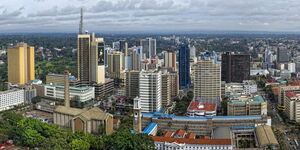Rice importers have been given a boost after the government announced the approval of the duty-free import of 500,000 tonnes of grade 1 white milled rice.
In a gazette notice on Tuesday July 29, the government revealed that no taxes would be levied on the rice imports until December 31, 2025, in a move aimed at alleviating pressure on the local rice market.
According to the gazette notice, this was in line with the provisions of the East African Community Customs Management Act of 2004, which governs customs procedures and regulations for East African Community (EAC) member states.
“Pursuant to section 114 (2) of the East African Community Customs Management Act 2004 as read with item 20 of Part B of the fifth schedule of the act, the Cabinet Secretary for the National Treasury and Economic Planning upon recommendation by the Cabinet Secretary for Agriculture and Livestock Development, directs that 500,000 metric tonnes of Grade 1 milled White rice be imported into Kenya duty-free on or before 31st December 2025,” the gazette notice read.
The decision comes barely a month after the government announced plans to cut rice imports by almost 50 per cent in a bid to support local farmers and curb cheap imports.
At the time, 8,500 rice farmers from Kirinyaga and neighbouring counties wanted the government to prioritise local production of rice before allowing further importation.
However, the move lacked practicality, particularly since Kenya’s rice demands has continued to rise on a monthly basis. By June 2025, the monthly requirement of rice stood at 100,000 tonnes whilst the country only produced 191,000 tonnes of milled rice in the entire 2024/2025 season.
One of the biggest challenges facing local rice production has been inadequate irrigation systems, high production costs and competition from cheaper imports.
In June, Kenya was handed a boost by the East African Community (EAC) Council of Ministers, who granted an extension to continue importing rice and wheat at preferential duty rates.
Following the decision, wheat importers were allowed to import the product at a 10 per cent tariff, which is considerably lower than the standard EAC Common External Tariff (CET) rate of 35 percent.
Similar to the White-Milled rice, the lower tariffs was the government’s way to strike a balance between supporting local production of wheat and curbing potential shortages since domestic production alone cannot meet the country’s annual consumption needs.
Kenya imports the majority of its rice from several countries in Asia, with data from the Kenya National Bureau of Statistics (KNBS) showing that India accounts for more than 90 per cent of Kenya’s rice imports, followed by Pakistan and Thailand.












